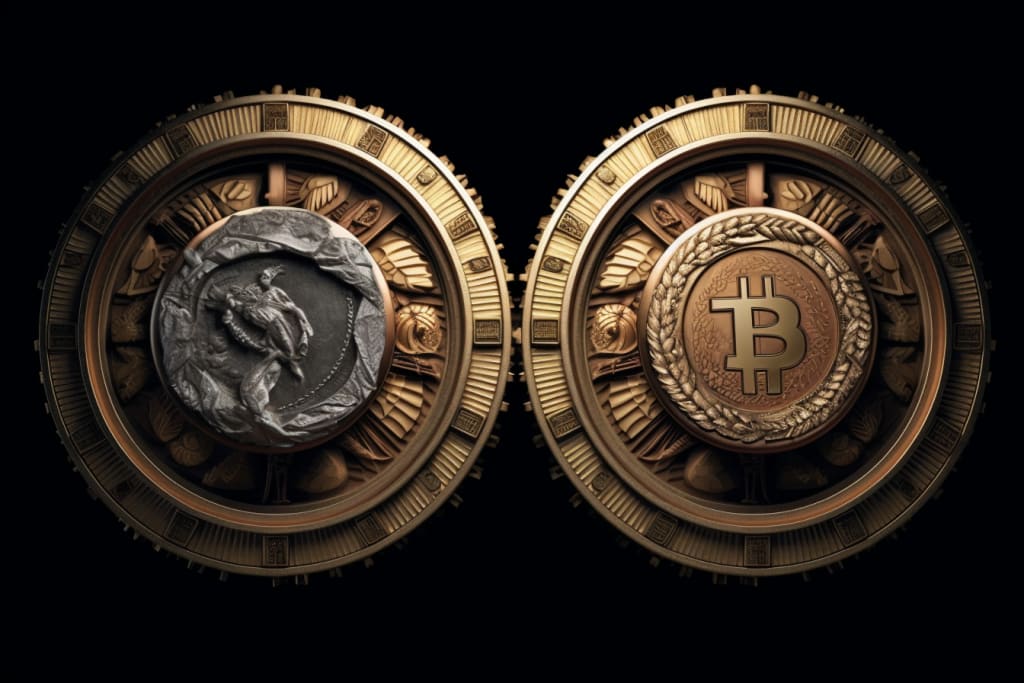Centralized vs. Decentralized Finance - Understanding Key Differences
Learn fundamental differences between centralized and decentralized finance in 5 minutes!

A small part of this story was created with the help of AI assistant KoalaWriter.
Overview
Centralized and decentralized finance are two different approaches to financial systems that differ in their structure, governance, and level of control.
In centralized finance (CeFi), traditional financial institutions such as banks and governments have control over financial transactions. In contrast, decentralized finance (DeFi) is a blockchain-based financial system that operates without intermediaries, giving users more control over their assets.
One of the main differences between CeFi and DeFi is the level of trust required in the system. CeFi relies on trusted intermediaries such as banks, governments, and other financial institutions to facilitate transactions and manage financial assets.
In contrast, DeFi operates on a trustless system that allows users to transact directly with each other without the need for intermediaries. This means that users have complete control over their assets, which are stored on a decentralized network of computers rather than in a centralized database.
Key Differences Between CeFi and DeFi
Centralized finance was invented thousands of years ago and is the only financial system humans used until recently.
This traditional financial system relies on intermediaries such as banks, regulators, and other financial institutions to manage transactions. CeFi is centralized because it relies on a central authority to manage transactions. In CeFi, users have to trust intermediaries to manage their transactions. This system is characterised by a lack of transparency, high fees, and slow transaction times (a bank transaction takes days).
Decentralized finance (DeFi) started in 2009 with Bitcoin, the first real application of a peer-to-peer digital currency.
DeFi operates on a decentralized network of computers without intermediaries, meaning it does not rely on a central authority to manage transactions. Instead, transactions are managed by a network of computers that are connected to each other.
DeFi leverages blockchain technology to create a decentralized financial system where users have complete control over their transactions. As they hold their private keys, they can execute transactions without any intermediaries.
DeFi is characterized by transparency, lower fees, and faster transaction times.
Another key difference between CeFi and DeFi is the level of accessibility. CeFi is often criticized for being opaque and inaccessible to many people, particularly those without access to traditional banking services. DeFi, on the other hand, is designed to be open and accessible to anyone with an internet connection. It allows users to access financial services such as lending, borrowing, and trading without the need for a middleman, making it a more inclusive and democratic financial system.
CeFi and DeFi also differ in the level of transparency. In CeFi, financial intermediaries are responsible for providing transparency and accountability to their users. In contrast, DeFi is built on a public ledger which can be consulted by anyone, providing a high level of transparency.
One more important aspect is immutability. Transactions carried out on the blockchain are immutable, meaning they cannot be deleted or reversed. This guarantees blockchain transactions' security and makes the data much less susceptible to hacking.
CeFi vs DeFi: Pros and Cons
Both CeFi and DeFi have their own set of advantages and disadvantages.
CeFi offers a more familiar and established financial system with a high level of security and regulatory compliance. CeFi provides users with access to a wide range of financial products and services.
However, CeFi has numerous disadvantages. Users have to trust financial intermediaries to hold and manage their funds. As users lack control over their assets, this can lead to fraud, theft, and mismanagement.
As they keep their data in one place, CeFi systems are vulnerable to single points of failure. If the central institution experiences technical issues or security breaches, this can have severe consequences for all participants, such as financial losses or disruptions.
DeFi requires users to meet certain criteria which limits access to many people and creates inequalities. In addition, CeFi systems lack transparency, are slow and subject to high fees. They are very slow to innovate due to regulatory requirements.
DeFi offers users a completely different experience, one that is a lot more accessible and transparent.
However, as DeFi lacks regulation and oversight, it's infested with scams, hacks, and other security vulnerabilities. DeFi platforms are also subject to technical limitations such as scalability and interoperability.
In addition, using DeFi platforms can be complex. It requires users to shift their mindset and acquire a new set of technical skills.
Overall, both CeFi and DeFi have their own set of advantages and disadvantages.
However, we shouldn't forget that DeFi is a nascent technology at the very beginning of its journey. Once it the technology progresses to allow for better scalability, interoperability and user-friendliness, and the necessary regulations are finally in place, DeFi can very well become massively adopted.
Zooming out
Centralized finance and decentralized finance are two different financial systems that offer unique advantages and disadvantages.
CeFi is a traditional approach to finance where intermediaries such as banks and financial institutions act as trusted third parties to facilitate transactions. On the other hand, DeFi is a new and innovative approach that leverages blockchain technology to create a trustless and transparent financial system.
While CeFi represents a more established and regulated solution, it is often criticized for its lack of transparency, slowness, high fees, and lack of accessibility.
DeFi offers a more transparent and decentralized system, free from intermediaries and censorship. However, DeFi is still in its early stages of development, and its lack of regulation can make it risky to use.
Ultimately, the choice between CeFi and DeFi depends on the individual's financial goals and risk tolerance. Those who value stability and regulation may prefer CeFi, while those who value transparency and decentralization may prefer DeFi. As the world of finance continues to evolve, it will be interesting to see how these two approaches to finance will continue to shape the financial landscape.
About the Creator
Blockchain Decoders
I'm Ziva from Blockchain Decoders. At Blockchain Decoders, we firmly believe that the blockchain technology has the same transformative power as the internet had 30 years ago. Our mission is to educate you, so that you are not left behind!






Comments
There are no comments for this story
Be the first to respond and start the conversation.